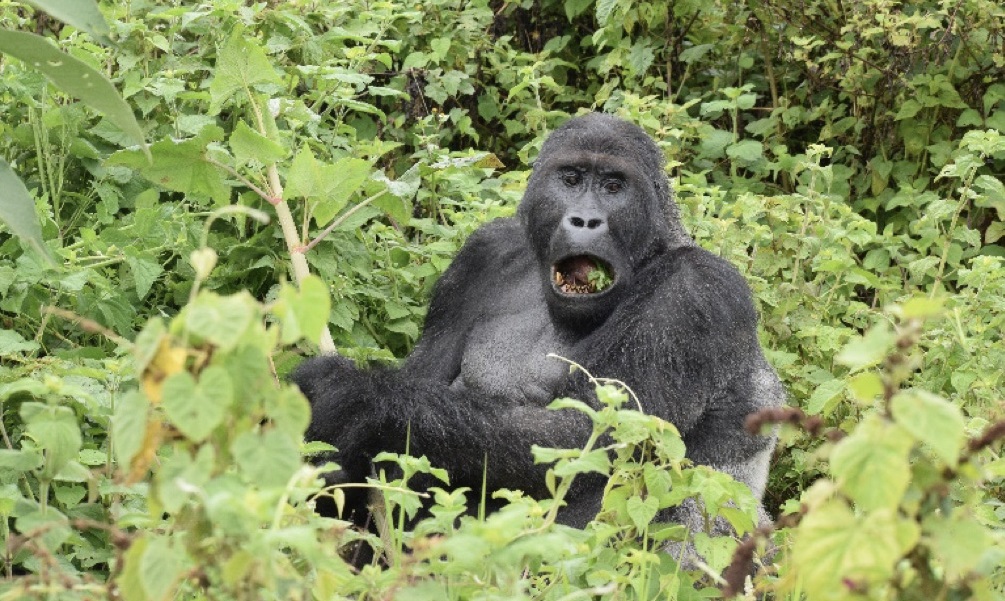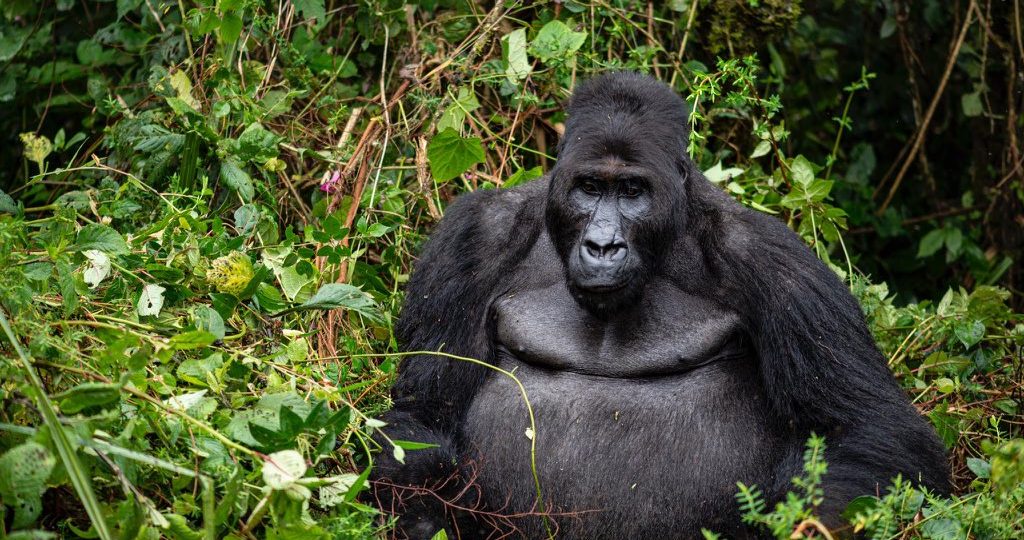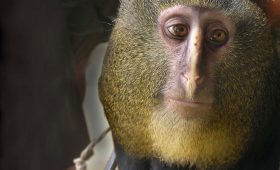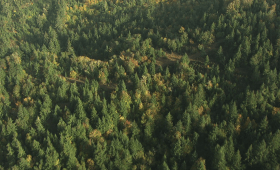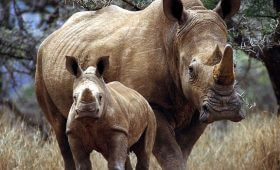Gorillas in the Democratic Republic of the Congo are made of two subspecies: the Grauer’s Gorillas and the mountain Gorillas. Worldwide there exist two main species of gorillas: the western and eastern gorilla. The western gorilla is divided into two subspecies: Western lowland gorillas and Cross River gorillas. The Eastern gorilla is also divided into two subspecies: The Mountain gorilla and the Eastern lowland gorilla, also known as the Grauer’s Gorillas.
Gorillas in the Democratic Republic of the Congo are one of the wildlife species that have put Congo on the map being known for the gorilla trekking activity that many travelers fancy across the world. The Democratic Republic of Congo is blessed to be one of the 3 countries with endangered mountain gorilla species. Gorillas are natives to Africa and according to WWF (World Wildlife Federation), gorillas are the world’s largest primate. Mountain Gorillas are fewer than 1000 and are spread between the Democratic Republic of the Congo, Rwanda and Uganda. Thanks to an amazing work being done by the ICCN, the Virunga National Park has recorded more than 5 new baby gorilla births in 2020. Additionally, thanks to new infrastructures and a good management team, the Virunga National Park is receiving on average 500 tourists trekking the mountain gorillas.
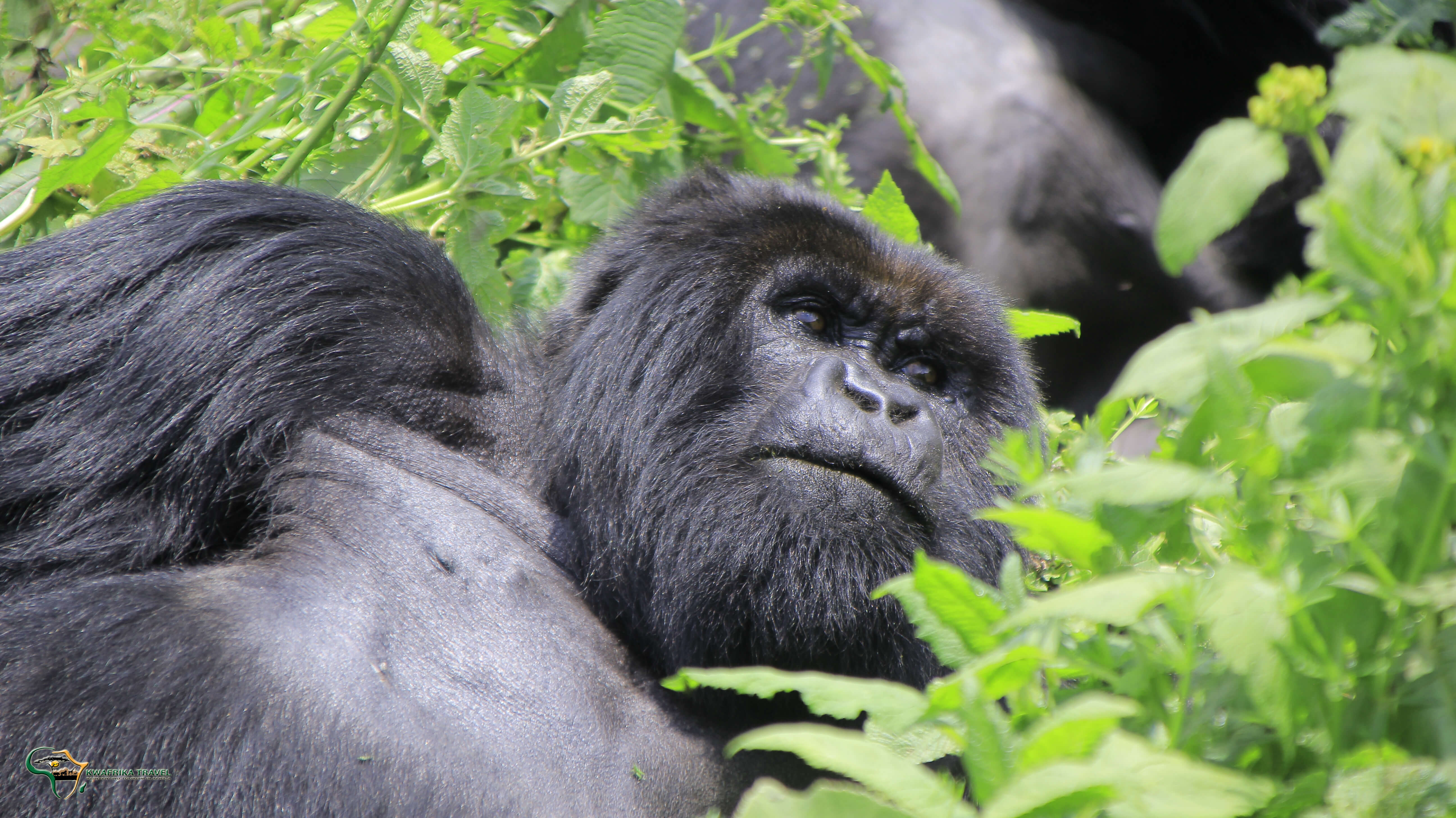
This sub-specie of Gorillas in the Democratic Republic of the Congo is the reason why Congo is the best gorilla destination. The Grauer’s gorilla (Gorilla beringei graueri) or Eastern Lowland Gorilla is only found in the eastern part of the Democratic Republic of Congo. They live in tropical rainforests in mountainous and lowland areas of Eastern Democratic Republic of Congo. The largest population live in Kahuzi Biega National Park. Another large population lives in Maiko National Park but they can also be found in small numbers in adjacent forests and reserves (Itombwe Massif, Usala forest and Tayna Gorilla reserve).
Eastern lowland gorillas are the largest of the gorilla subspecies and hence the largest primates still roaming earth. They look like mountain gorillas but with some differences.
An adult male weigh about 210 kilograms while females reach an average weight of about 100 kilograms. Eastern lowland gorilla feed on stems, fruits, bark, leaves and occasionally on insects (termites and ants). Like all gorilla sub-species, the Grauer’s gorilla is a very sociable and peaceful primate.
Eastern Lowland Gorillas trekking are done in Kahuzi Biega National which receives hundreds of visitors each month from all over the world. The experience with these unique species come once in a lifetime experience.
Common things to Gorillas in the Democratic Republic of the Congo
Both Mountain Gorillas and Eastern Lowland Gorillas have common characteristics:
- They live in groups that can contain up to 30 individuals. Each group composed of a dominant male, female and younger ones. The silverback protects all members of the group from danger. Gorilla breeding and reproduction is initiated by the female once they reach estrous. Younger males will leave the group on reaching maturity and form a family of their own after attracting females from neighboring groups.
- A female will give birth after about 9 months. The infant relies on breast milk for 3 years after which it is weaned.
- Like all gorilla sub-species, the Congo Gorillas are very sociable and peaceful primate.
- They all spend the bulk of their time foraging.
Difference Between Eastern lowland gorillas and Mountain gorillas
These two subspecies of gorillas are often lumped into one. Although they all belong to the eastern gorilla species, they have clear differences in both behavior and appearance:
- Mountain gorillas generally live in higher altitude areas compared to Eastern lowland gorillas:
- Mountain gorillas can be found in the Volcanoes National Park of Rwanda, Bwindi Impenetrable National Park of Uganda, Mgahinga Gorilla Park in Uganda and Virunga National Park in the Democratic Republic of Congo. However, Eastern Lowland Gorillas as said before are found only on DR Congo.
- Physically mountain gorillas are smaller in size compared to the Eastern lowland gorillas. The average weight of an adult male mountain gorilla is 195 kilograms while a male eastern lowland gorilla weighs about 210 kilograms on average. They have shorter arms and jaws. The Eastern lowland gorilla may be larger but have smaller noses and teeth when compared to mountain gorillas.
- Mountain gorillas have thicker and longer coats compared to Grauer’s gorillas.
- The overall population of Mountain gorillas is lower (1000 individuals) but increasing at a faster rate. On the other hand, the Eastern lowland population is estimated to be around 4000 but decreasing rapidly.
- The Mountain Gorillas in the Democratic Republic of the Congo were habituated for scientific reason by Diana Fossey. Consequently, when tracking the mountain gorilla visitors are advised to avoid eye contact with the silverback gorillas. On the other hand, during the same experience in Kahuzi Biega with Eastern Lowland Gorillas, visitors can make eye contacts with gorillas. These were habituated for tourism purpose by Andrien Descriver
